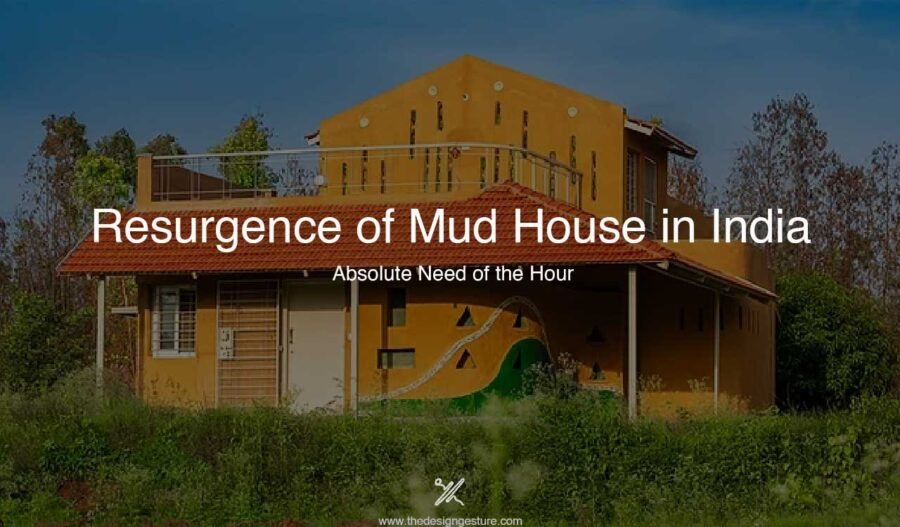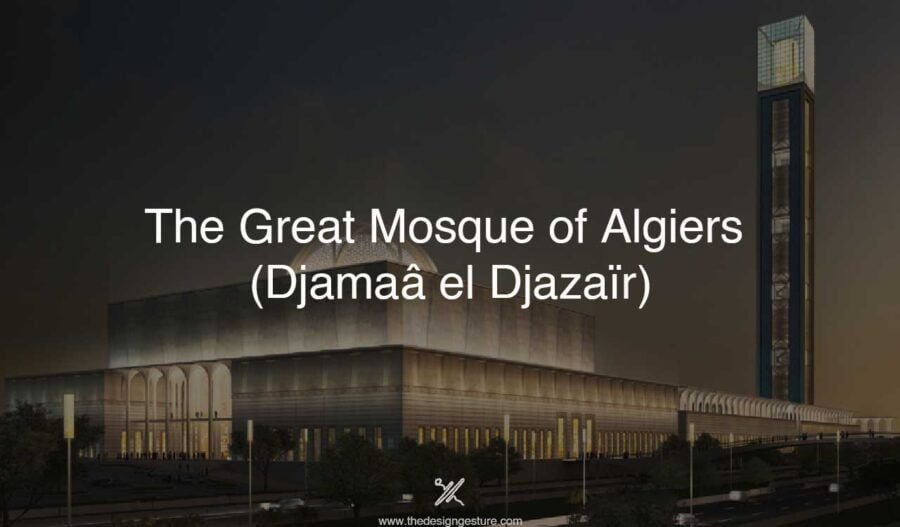Table of Contents
Introduction
For almost a century, the earth bore the brunt of modern architecture and industrial materials. Fortunately, a handful of architects awoke to the injustice done to the environment, relieving not just the surroundings from concrete jungles but also inhabitants from the soul-less spaces. After decades of sustainability shout-outs, Indian architects sought solace in mud house, the traditional building material to combat the harmful effects of construction. Why ‘MUD’? What makes ‘MUD’ unique? What does it feel like to construct with what is dug up? And what happens if the demolished structure could be buried back?
Mud: A Traditional Building Material
Mud in its various forms assumed different roles in traditional Architecture across India from North to South, East to West, and Deserts to Coastal Plains. In Kerala, the traditional ancestral houses, locally known as ‘Tharavadus’ are constructed with ‘vettukallu’ or laterite bricks and plastered with lime for aesthetic reasons. These houses stand strong even after 2 centuries of construction, clarifying the doubt about the structural integrity of mud structures.
Unlike in Kerala in Gujarat, a rather raw form of mud architecture or an obvious form of traditional mud architecture is found. The wattle and daub construction technique associated with mud today, was used for centuries in building traditional homes in Kutch, locally known as Bhunga. The Bhunga home plans were circular, walls were made of mud left to dry in the sun, further reinforced with a layer of bamboo or branches, and plastered with another layer of a mixture of mud and other organic materials. These walls were plastered with lime and decorated with traditional paintings. These structures stood the test of time and proved to be successful in providing insulation even in arid climates in Kutch.
Despite the existence of such adobe bricks and terracotta tiles, mud architecture is better known in the kutcha houses of ordinary people in the rural areas of India. For instance, Chuttillu houses from Vishakhapatnam District of Andhra Pradesh, Jalwali Houses of Bikaner, and Khidrat Houses of Jaisalmer districts of Rajasthan are better recognized as mud architecture.
Firms Facilitating the Green Initiative
Vernacular architecture is often overlooked and excluded from cities, due to various reasons including urbanization, globalization, and industrialization, and traditional mud architecture of India is also prey to the very reasons. However, the greenwashing of mud architecture and branding mud as an ecological material has pushed architects to shift from modern materials to mud, the traditional building material of India, especially in these times of environmental concerns, rising global interest in sustainability, and drastic climate changes.
Since then a handful of Indian architects have explored the potential of Mud in responding to climate change, reimbursing place-identity, and exploring its low carbon footprint and net-zero capabilities. Deliberately or accidentally, these mud architects remain divorced from the conventional architectural curriculum of elitism. They remain humble, connected to nature, and strongly value the needs of ordinary people.
In this direction, Thannal Natural Homes is a Natural Building Awareness Group founded by Architect Biju Bhaskar and his wife Sindhu Bhaskar in 2011, intending to not only build mud houses but also to revive the skills associated with mud architecture by conducting hands-on workshops, publishing books and articles and hosting online courses.
Also, Sketch Design Studio founded in 2014 by Shipra Singhania, is a natural building studio that aims to experiment with natural building materials like mud, lime, and stone blending traditional crafts with contemporary ideas. Kerala-based Bhoomija Creations, ‘Make in Mitti’ founded in 2019, Bangalore-based Masons Ink, Studio Verge in Bangalore, and Wallmakers all explore the use of natural building materials in contemporary buildings.
Unmasking the Potential of Mud
Mud is an ecological building material as it is found in abundance in the surroundings, it can be extracted and manufactured locally and it is bio-degradable. Thus, it is also a cost-effective material. It leaves a minimal carbon footprint compared to other building materials like cement. It is a porous material with high thermal mass that provides a considerable amount of insulation leading to high energy efficiency. Nevertheless, mud extends beyond the traditional applications of wattle and daub walls in kutcha houses, adobe bricks, or terracotta tiles. It takes on diverse shapes through unique construction methods.
Adobe Bricks in Mud House
Adobe Bricks are man-made sun-dried mud bricks. This is one of the known ancient techniques of using mud in the construction of walls. Due to manual efforts, there is no use of fossil fuel in manufacturing and thus, it is an eco-friendly technique. Even its rubbles after demolition can be buried in the earth without any harmful effects.
Cob Wall
This is a seemingly easy technique due to its organic outcome. Cob translates to a ‘lump of soil’ and cob walls are built by laying the mixture of 25-30% clay along with 70-75% sand and straw and water cobs horizontally along the foot-print of the wall and vertically in layers one above the other. As the mixture is damp, after a certain height is reached the cob wall is left to dry after which the iterative process is again continued until the desired height is reached. Cob walls show seismic resistance and can assume unimaginable organic shapes and forms.
Rammed Earth
Rammed earth walls are a standardized variation of cob walls that involve the use of wooden formwork. Wooden planks are placed at a desired distance from each other and a mixture of gravel, sand, silt, and clay is poured into the formwork and compacted with a pneumatic tamper until it reaches half the original volume. This process is repeated to complete the wall. With the reinforcement of bamboo, rammed earth walls can withstand storms and earthquakes.
Earthbag Wall
Earthbag construction is not an entirely new technique as earthbags were stacked and used as military bunkers, barriers, and artificial raised banks to prevent flooding. Jute bags are filled with damped earth and stacked to form a wall that is hand-tampered with to become sturdy. It is essential to plaster these walls as the bags may wear out with time. Instead of jute bags, propylene bags are also used but aren’t eco-friendly. Another major advantage of this technique is that a lesser amount of water is involved in this technique than in others.
People, Mud, and the Reality
Though the environmentalists all praise this green initiative; the revival of mud architecture, the common people, especially in urban areas still associate mud architecture with poverty. Even the greenwashing of mud wouldn’t ensure its comeback in urban areas, if the taboo associated with mud homes isn’t broken. Another issue is the change of definition of human comfort from optimum to desired, mainly due to the improved economic capabilities of citizens in this industrialized and globalized nation. For instance, though the optimum temperature of the surroundings for human comfort is 22℃ – 25℃, people prefer a temperature of 18℃ – 20℃ which is viable to achieve with the present-day air-conditioning technology which however comes at the cost of the environment.
A feasible solution will be to combine the traditional technique with a modern twist to accommodate the needs and desires of a contemporary citizen. An aspiring Architect and the founder of the architectural practice ‘Wallmakers’, Vinu Daniel who started in this line, moved a step ahead in this direction. Daniel’s encounter with Architect Laurie Baker and the Gandhian words that influenced Baker inspired Daniel to build for ordinary people with locally available materials, such that architecture coexisted with nature.
Initially, at the Wallmakers, he started to build only with mud blocks but later a challenging project created a significant shift in his thought process, he began to build with debris. From Mud blocks to Debris. Sustainability at its peak. What is interesting is that with mudblocks or debris, the quality of spaces that Wallmakers create is beyond expressible.
The current global environmental crisis and climate change demand such revolutionary acts to keep the art of designing, building, and thriving going. At the point where the population is growing and the need for accommodation is also growing with the declining resources and the increasing deteriorating impact of the existing materials in the field, it’s time to rethink the priorities, luxuries, and conventions.




